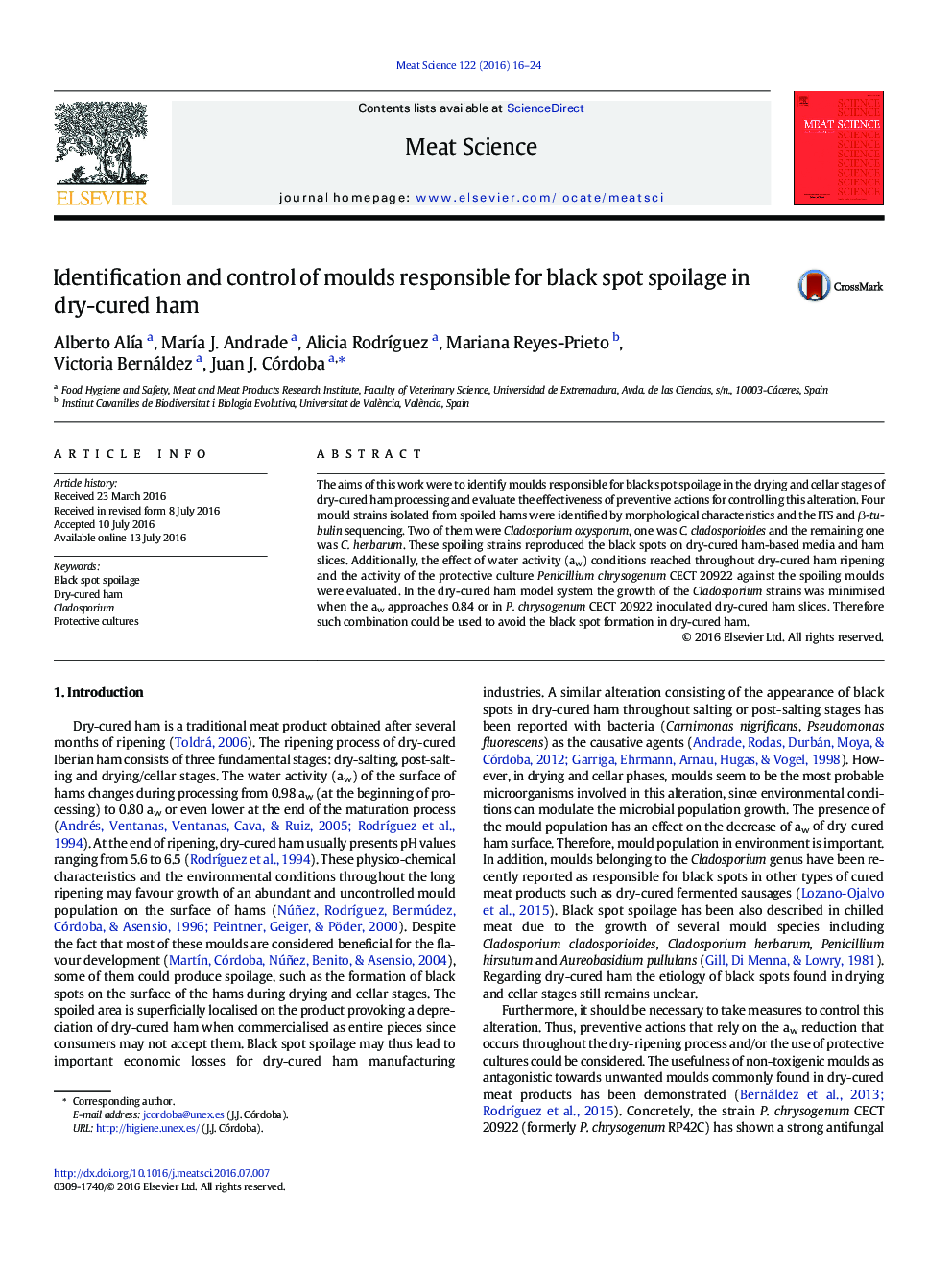| Article ID | Journal | Published Year | Pages | File Type |
|---|---|---|---|---|
| 5791008 | Meat Science | 2016 | 9 Pages |
Abstract
The aims of this work were to identify moulds responsible for black spot spoilage in the drying and cellar stages of dry-cured ham processing and evaluate the effectiveness of preventive actions for controlling this alteration. Four mould strains isolated from spoiled hams were identified by morphological characteristics and the ITS and β-tubulin sequencing. Two of them were Cladosporium oxysporum, one was C. cladosporioides and the remaining one was C. herbarum. These spoiling strains reproduced the black spots on dry-cured ham-based media and ham slices. Additionally, the effect of water activity (aw) conditions reached throughout dry-cured ham ripening and the activity of the protective culture Penicillium chrysogenum CECT 20922 against the spoiling moulds were evaluated. In the dry-cured ham model system the growth of the Cladosporium strains was minimised when the aw approaches 0.84 or in P. chrysogenum CECT 20922 inoculated dry-cured ham slices. Therefore such combination could be used to avoid the black spot formation in dry-cured ham.
Related Topics
Life Sciences
Agricultural and Biological Sciences
Food Science
Authors
Alberto AlÃa, MarÃa J. Andrade, Alicia RodrÃguez, Mariana Reyes-Prieto, Victoria Bernáldez, Juan J. Córdoba,
